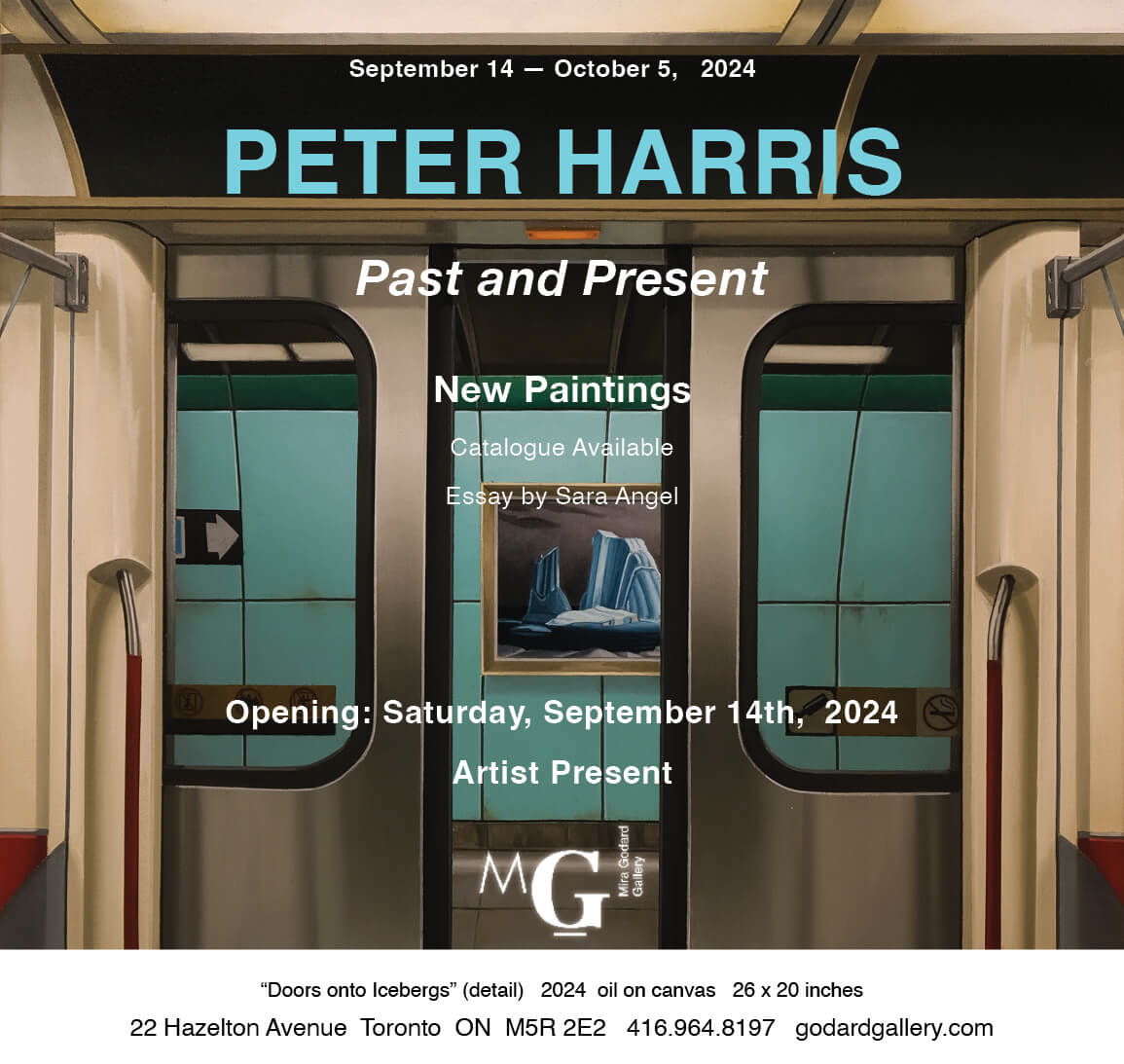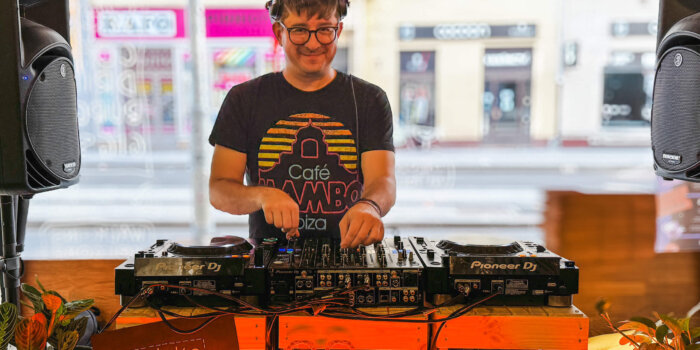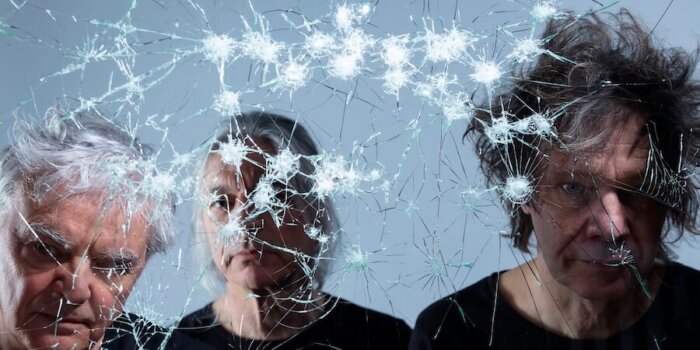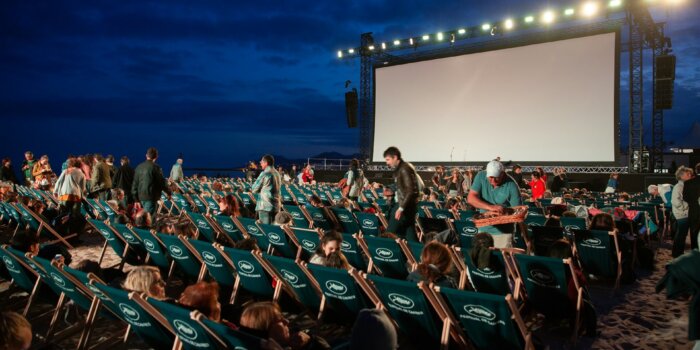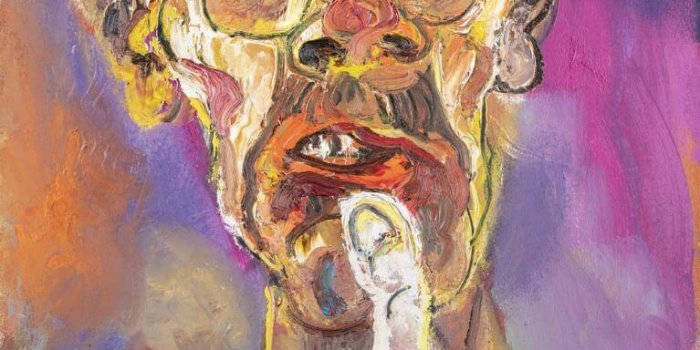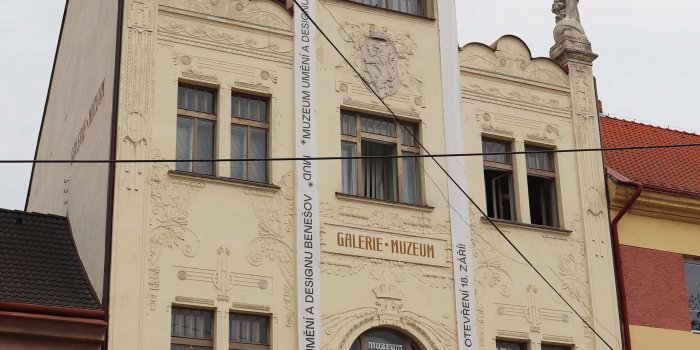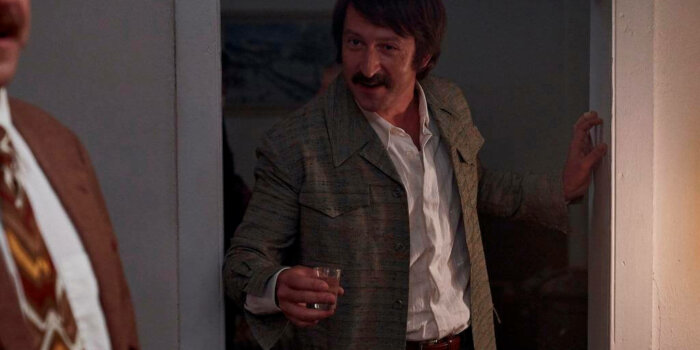Interview: Peter Harris
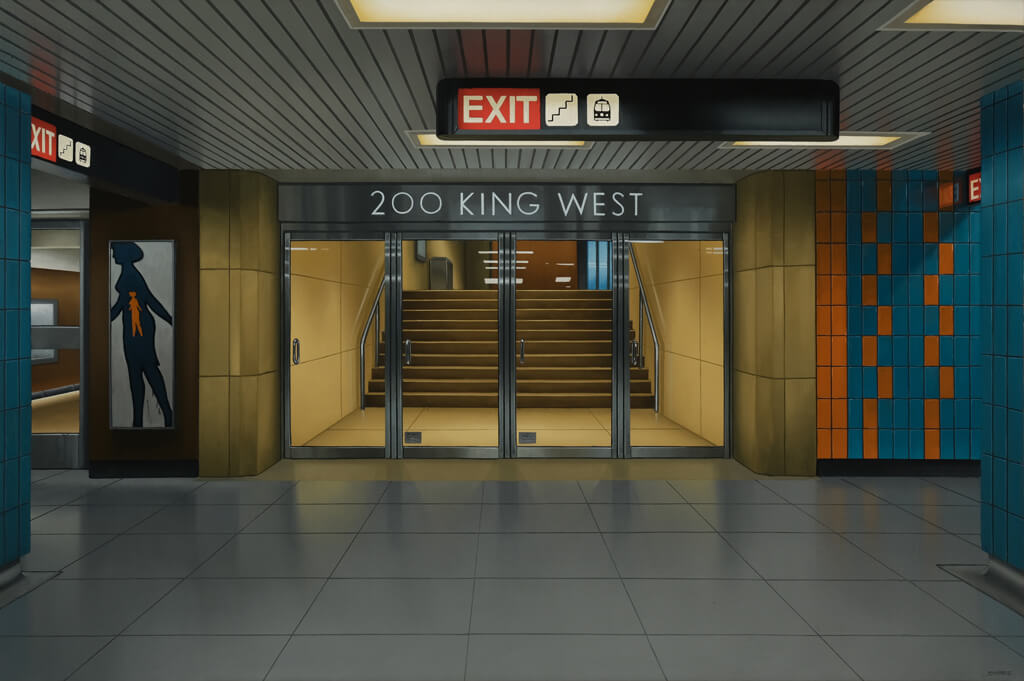
Peter Harris is a Canadian painter whose pictures are void of people and have a certain atmosphere that many adore. We reached out to him and interviewed him about city life, art and solitude.
I always wonder if painters were kids who painted a lot more than others, or if that evolved later on. How was it with you?
I definitely was interested in painting and drawing as a child, from about the age of 10. I wasn’t great in the beginning, but I enjoyed it and had lots of encouragement from my parents.
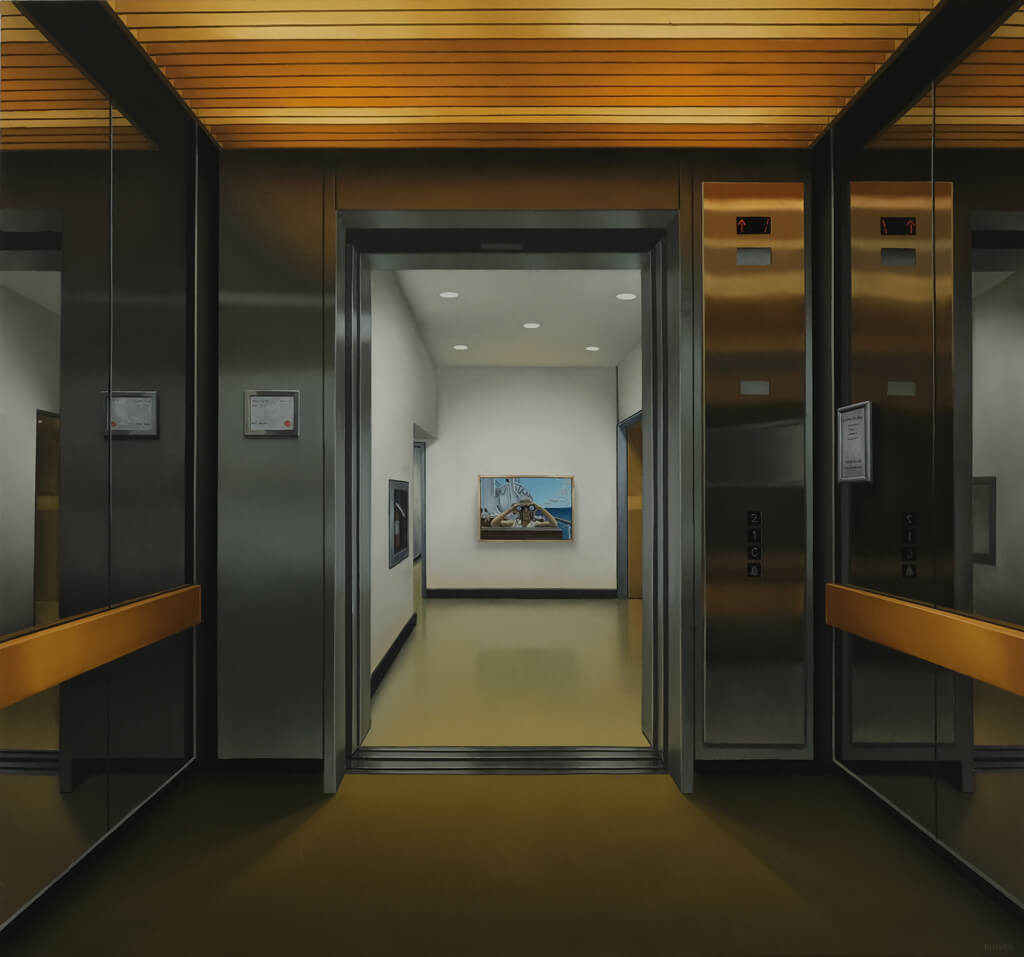
Elevator onto Colville,28 x 30″, oil on canvas, 2024
What was the place or places where you grew up like? Did it imprint its shapes and colours into your imagination? And what made you think “I shall be an artist”?
I grew up in the suburbs of London, ON, Canada. It’s a mid – sized city 2 hours west of Toronto. It was very idyllic, but ultimately it’s the type of place where as a young person I wanted to leave in search of a larger city, with more culture and entertainment options. Going to University to study art in a different city was a way to get out of London and try somewhere else. I eventually graduated and thought, why not try to be an artist for a year or two and see how it goes?
Was it difficult to establish yourself as an artist and what is it like to be a painter in Canada?
It took many years to get established. There is no guide book on how to do that, its only through trial and error, and talking to peers to try and figure out the art world (or the little corner of it that I wanted to occupy). Slowly I was able to get in to shows, find a gallery to represent me, than slowly moved up the ladder to better and more established galleries. I do think that there is much support for the arts and painting in Canada. There are some grant programs from the government that I accessed which helped, and an educated population that want to collect art, especially in Toronto where I now live.
What is your studio (or the place you work) like? I saw a photo, not sure how current, it had a wooden floor and wasn’t huge.
I work out of a historical converted factory building in downtown Toronto known as “401 Richmond”. It’s full of other artists and cultural businesses. I have my own private space there – about 220 square feet. Just big enough for me. Lovely wood floors and natural light.
The paintings you became renowned for are often places that are empty interiors, or cityscapes like gas stations at night. What is so beautiful about them?
I like to paint the often overlooked spaces in the urban landscape. Places we don’t spend much time in that I can draw attention to, and contemplate as a vital part of our daily lives in the city. They are the perfect subject to paint as I can manipulate the light and shadows in them to draw attention to the areas of interest, and create a distilled version of the urban landscape with a sense of solitude.
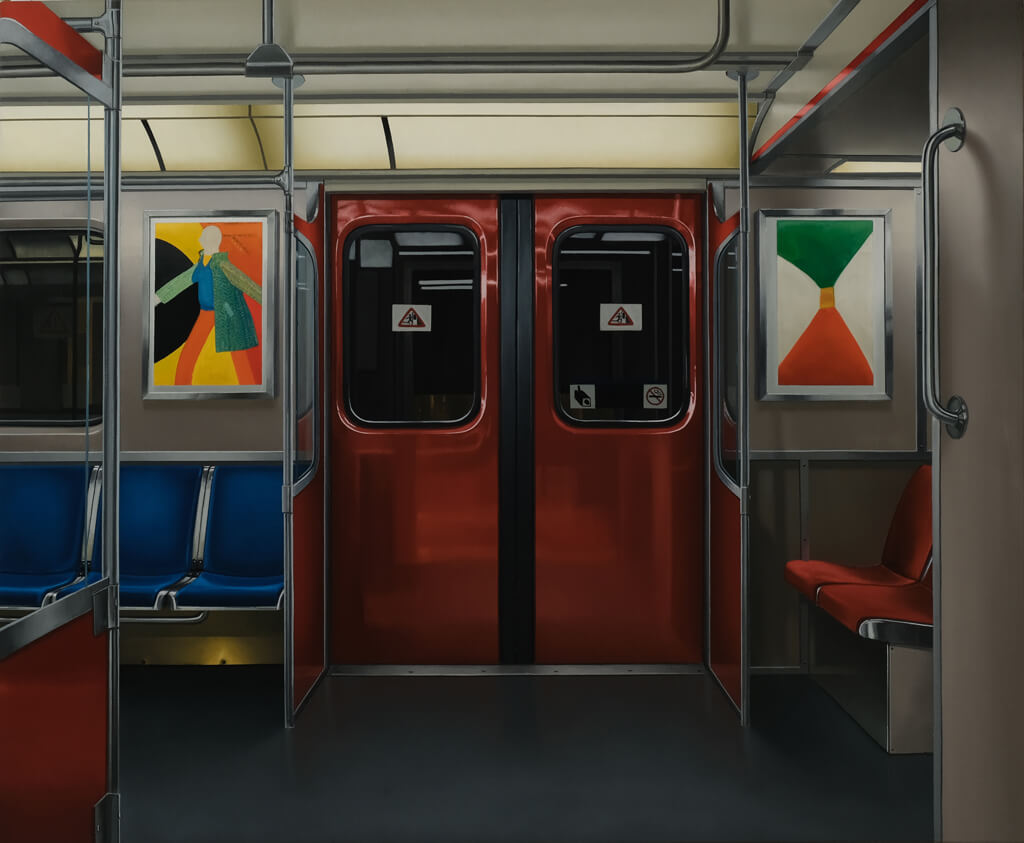
Between Curnoe and Bush, 28 x 34″, oil on canvas, 2024
What is it that makes a city at night so magnetic?
I love how at night the darkness becomes a stage for the objects of the city – a gas station or storefront or parking lot- to emerge from. They reveal themselves in a mysterious way that always leaves something hidden for the imagination to fill in.
Would you say the paintings could be called liminal spaces?
Yes! I really focus on being at the threshold of these spaces, often entering or exiting a space. I like the uncertainty of portraying a space where its impossible to linger in real life- like an elevator- and make a contemplative painting of that space.
How do you work with light? It seems to be so important in your paintings. Some of the interiors even seem to look like there is that flickering cold light of an old fluorescent light.
I really use light in the setting as a tool to create mood, to draw focus to different areas of the subject, and to obscure or reveal the nature of the architecture. I do pay attention to the colour temperature of the different types of light that I paint- from the cool fluorescents to warm incandescent, each can change the vibe of a space.
You also had a series where these spaces had famous painting on walls, Hopper and Rothko and I think De Chiricco amongst them. How did these find their way in those spaces?
I wanted to “curate” or select well known historical paintings that I could imagine hanging in the contemporary spaces that I paint. This is a way to draw attention to spaces by the addition of elements that make people pause to consider why the painting might be hanging there. Also, many of the artworks I include, offer a different artistic interpretation of urban landscapes that contrast with my own style of representing the urban elements.
Are there any paintings of yours that have people?
I never paint people. By eliminating humans from my work, my paintings can feel more immersive and allow the viewer to imagine themselves navigating through the space.
What kind of music are you listening to?
Lately I like to download DJ mixes of Cumbia music, so that I can have hours of uninterrupted music to listen to while I work. It helps me to focus!
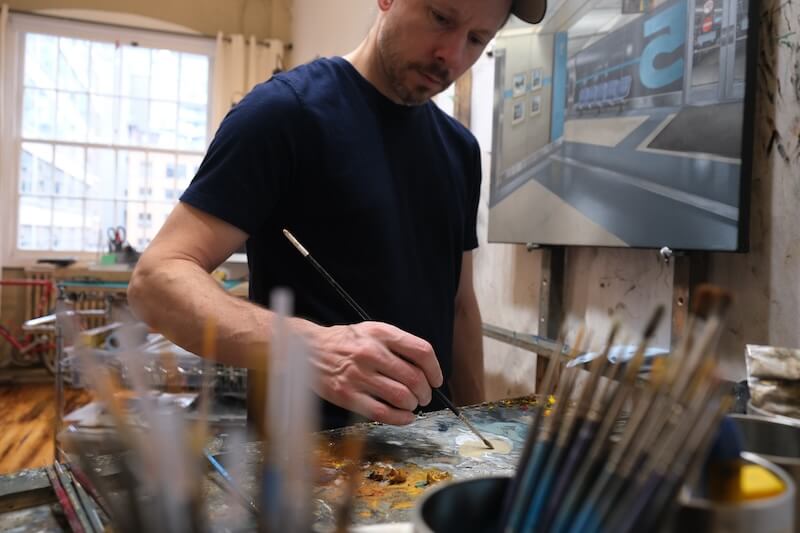
Portrait of the artist working in the studio at 401 Richmond
Any new exhibitions?
I have a new show opening Sept 14 2024 at the Mira Godard gallery in Toronto. The show is called “Past and Present”, and is a series of new paintings where I have combined contemporary urban architecture such as subway stations, elevators, and subway cars, with examples of historical Canadian landscape painting, creating a dialogue between my artistic vision of the urban landscape, and the artists that have painted Canadian scenes before me.
Past and Present
Mira Godard Gallery
Toronto, ON Canada
Sept 14 – Oct 5 2024
www.godardgallery.com
